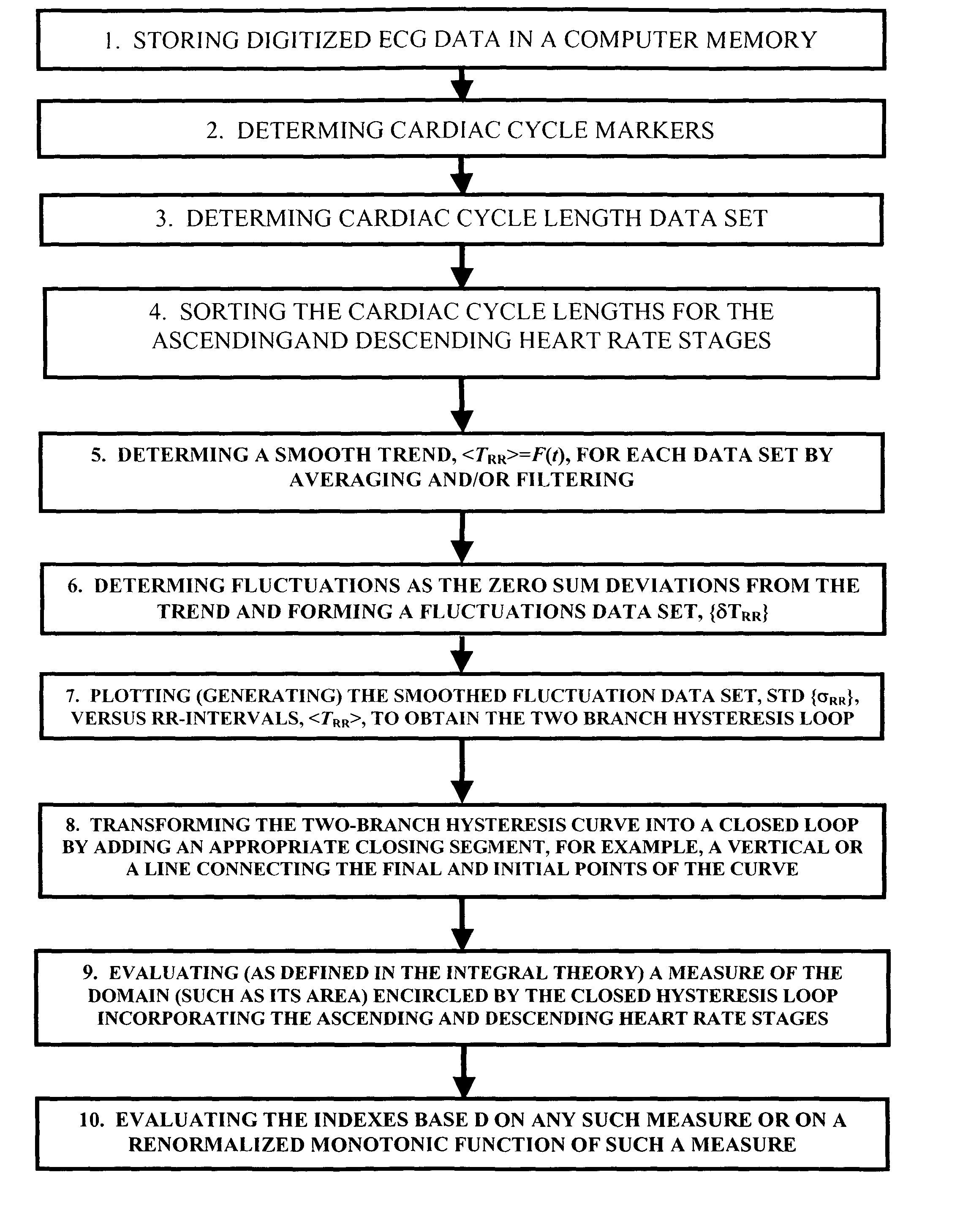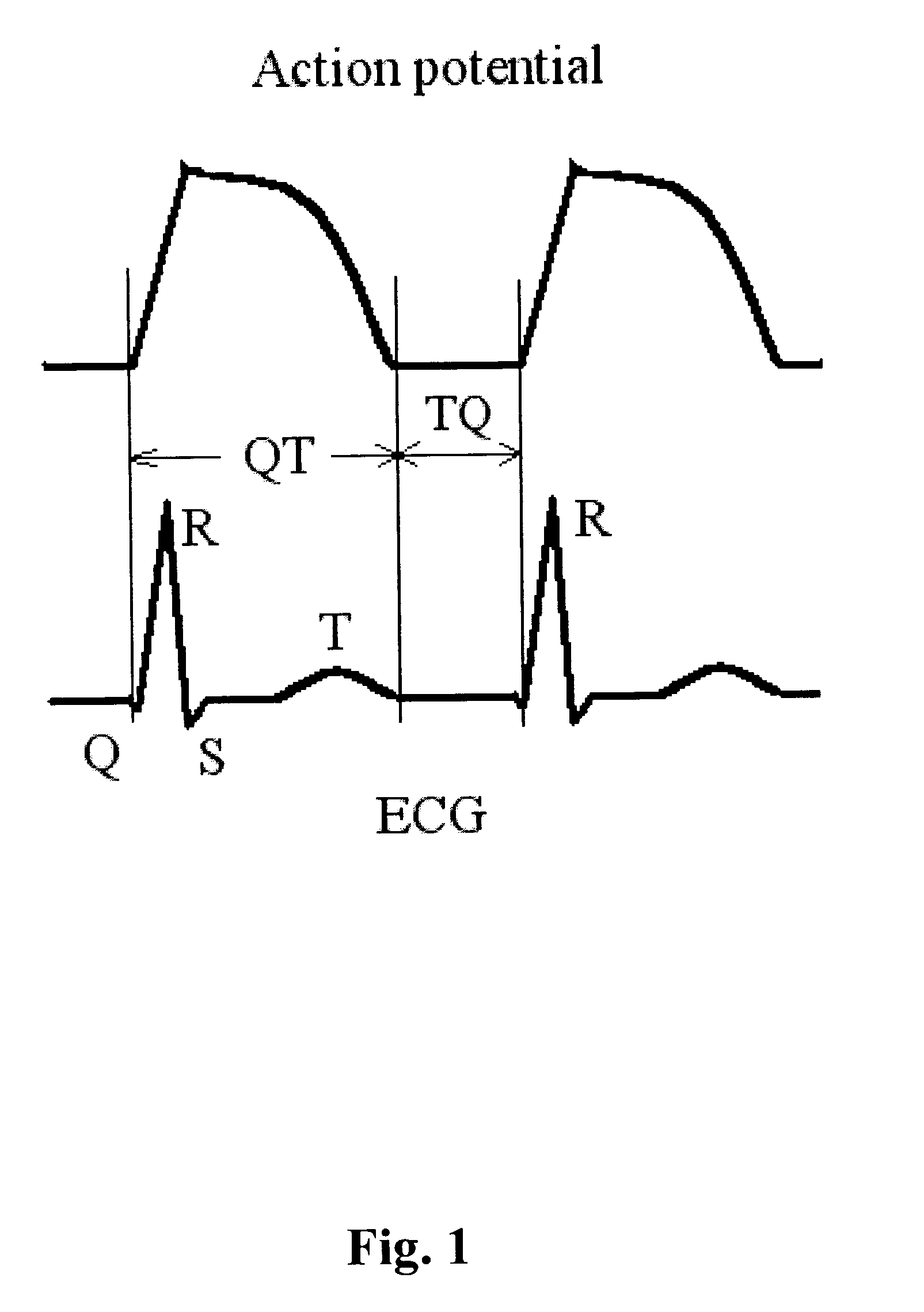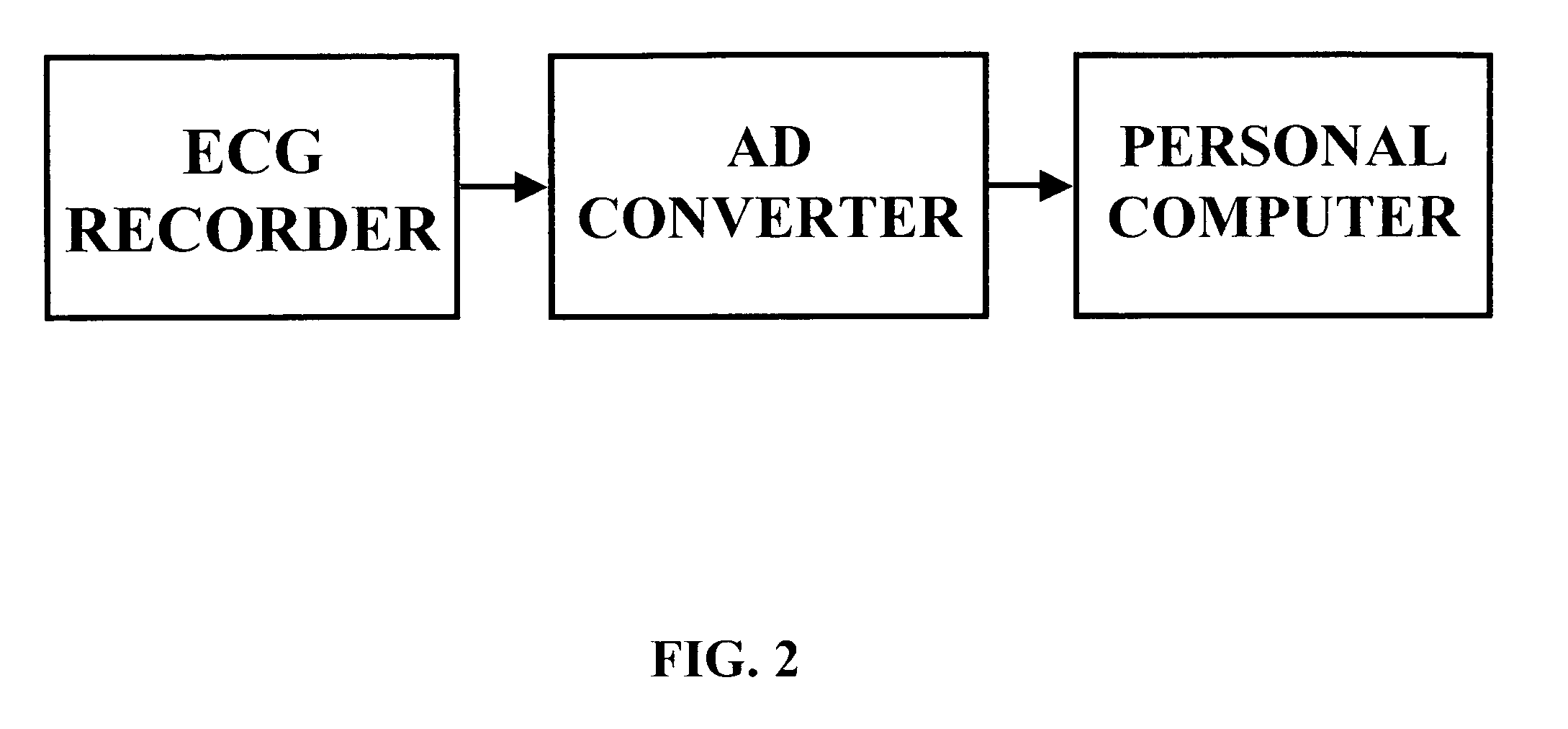Method and system for evaluating cardiac ischemia based on heart rate fluctuations
a heart rate fluctuation and cardiac ischemia technology, applied in the field of non-invasive high-resolution diagnostics of cardiac ischemia, can solve the problems of less accurate predictors of cardiac electrical instability, qt interval dispersion is linked with risk of arrhythmia, and type of hysteresis phenomenon is not useful in assessing cardiac muscle health or in assessing cardiac ischemia, etc., to achieve gradual increase of heart rate and low load level , the effect o
- Summary
- Abstract
- Description
- Claims
- Application Information
AI Technical Summary
Benefits of technology
Problems solved by technology
Method used
Image
Examples
example 1
Testing Apparatus
A testing apparatus consistent with FIG. 2 was assembled. The electrocardiograms are recorded by an RZ152PM12 Digital ECG Holter Recorder (ROZINN ELECTRONICS, INC.; 71-22 Myrtle Av., Glendale, N.Y., USA 11385-7254), via 12 electrical leads with Lead-Lok Holter / Stress Test Electrodes LL510 (LEAD-LOK, INC.; 500 Airport Way, P.O. Box L, Sandpoint, Id., USA 83864) placed on a subject's body in accordance with the manufacturer's instructions. Digital ECG data are transferred to a personal computer (Dell Dimension XPS T500 MHz / Windows 98) using a 40 MB flash card (RZFC40) with a PC 700 flash card reader, both from Rozinn Electronics, Inc. Holter for Windows (4.0.25); waveform analysis software is installed in the computer, which is used to process computer based waveform analyzer software. The hysteresis loop for each tested subject and an indicium that provides a quantitative characteristic of the extent of cardiac ischemia in said subject are then computed manually or...
example 2
An Alternative Testing Apparatus
A testing apparatus consistent with FIG. 3 was assembled. Experimental data were collected during an exercise protocol programmed in a Landice L7 Executive Treadmill in the way as described in Example 1. Instead of using a Digital ECG Holter Recorder, the instantaneous heart rate during exercise was directly measured using a Polar S810 heart rate monitor (Polar Electro Inc., 370 Crossways Park Dr., Woodbury,N.Y. 11797-2050). The Polar S810 heart rate monitor incorporates an analog-digital converter whose output is directly fed to a computer in which the data are stored as a digital array representing the cardiac cycle length data set. The hysteresis loop for each tested subject and an indicium that provides a quantitative characteristic of the extent of cardiac ischemia in said subject are then computed manually or automatically in the computer through a program implemented in Fortran 90 as illustrated in FIG. 5.
examples 3-5
Human RR-fluctuation Hysteresis Studies
These examples illustrate quasi-stationary ischemia-induced RR interval fluctuation hysteresis in different human subjects. These data indicate that the method possesses a potential for high sensitivity and high resolution.
PUM
 Login to View More
Login to View More Abstract
Description
Claims
Application Information
 Login to View More
Login to View More - R&D
- Intellectual Property
- Life Sciences
- Materials
- Tech Scout
- Unparalleled Data Quality
- Higher Quality Content
- 60% Fewer Hallucinations
Browse by: Latest US Patents, China's latest patents, Technical Efficacy Thesaurus, Application Domain, Technology Topic, Popular Technical Reports.
© 2025 PatSnap. All rights reserved.Legal|Privacy policy|Modern Slavery Act Transparency Statement|Sitemap|About US| Contact US: help@patsnap.com



